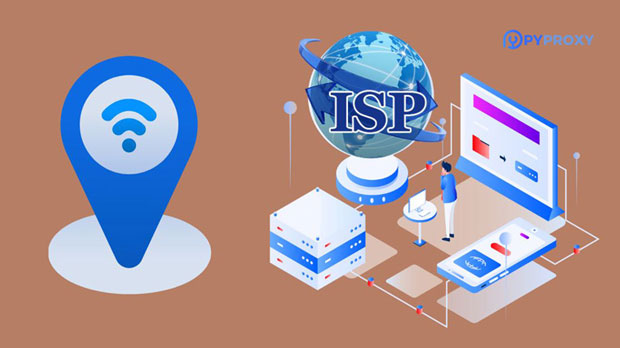Is it legal to use a proxy IP to access a blocked website?
In today's digital age, access to certain websites can often be restricted due to government censorship, corporate firewalls, or regional geo-restrictions. This has led many users to turn to methods like proxy ips to bypass these blocks. However, a key question arises: is it legal to use proxy ips to access websites that are blocked? While proxy services themselves are not inherently illegal, the legality of their use depends on several factors, including local laws, the specific content being accessed, and the intent behind bypassing the restrictions. In this article, we will delve deeper into the legal landscape surrounding the use of proxy IPs to access blocked websites, analyzing both the potential legal risks and legitimate use cases. Understanding Proxy IPs and Their FunctionalityBefore we discuss the legality of using proxy IPs, it is essential to understand what they are and how they function. A proxy server acts as an intermediary between the user's device and the internet. When using a proxy, the user's requests are first sent to the proxy server, which then forwards the requests to the target website. The website, in turn, responds to the proxy server, which sends the information back to the user. This process masks the user's IP address and allows access to websites as though the request is originating from a different location.Proxy services are commonly used for a variety of reasons, including security, privacy, and to bypass restrictions such as geo-blocks. For instance, individuals in countries with strict internet censorship may use proxy IPs to access platforms or websites that are otherwise unavailable. Similarly, companies may use proxies to gather market intelligence or for SEO purposes. However, while proxies serve legitimate purposes, the question remains whether they are legally acceptable in different contexts.Legal Considerations for Using Proxy IPsThe legality of using a proxy IP to access blocked websites is complex and varies by jurisdiction. Different countries have different rules and regulations regarding online activity, internet censorship, and data privacy. Below, we will explore some key legal considerations when using proxy IPs.1. Government Regulations and CensorshipIn some countries, governments heavily regulate internet access and restrict citizens from visiting certain websites, often for political or social reasons. For example, China, Russia, and several Middle Eastern countries have enacted strict laws that limit access to specific online content. In such jurisdictions, using proxy IPs to bypass these restrictions may be considered illegal or even punishable by law.In these cases, authorities may view proxy use as an attempt to evade censorship and could impose fines or other legal consequences. It is important to be aware of local regulations regarding internet usage, as using proxy servers to access blocked content could lead to legal issues. In extreme cases, governments may track and prosecute individuals who bypass content restrictions.2. Copyright and Intellectual Property LawsAnother important aspect of proxy IP legality involves copyright infringement. Some websites may be blocked or restricted due to licensing agreements, geographical limitations, or intellectual property concerns. For example, streaming platforms often block access from users in certain regions because they do not have the rights to distribute content there.In such cases, using proxy IPs to circumvent these restrictions could potentially violate copyright laws. Accessing content through proxies in a manner that violates the terms of service of the website or infringes on intellectual property rights could result in legal action, such as copyright infringement claims or penalties.3. Terms of Service ViolationsMost websites and online platforms have terms of service (ToS) that users must agree to before using their services. These terms often include clauses that prohibit the use of proxies or other tools to bypass geographic restrictions or access blocked content. If a user violates these terms, even if it is not illegal under local law, they could face consequences such as account suspension, banning, or other penalties imposed by the website or service provider.While these violations are typically not criminal offenses, they could lead to significant personal or financial consequences for the user, especially if they rely on a specific platform for business or personal use.Ethical Considerations in Using Proxy IPsBeyond the legal ramifications, there are also ethical considerations when using proxy IPs to access blocked websites. These considerations often revolve around respect for the rights of content creators, the potential for abuse, and the broader implications of circumventing access controls.1. Respect for Local Laws and Cultural NormsIn many cases, restrictions placed on websites are due to cultural, political, or ethical concerns specific to a region. For example, some countries restrict access to certain types of content based on cultural values or moral considerations. Using proxy servers to bypass these restrictions may disregard local laws and cultural sensitivities, which could be seen as unethical by the authorities or the citizens of that country.2. Fair Use and Intellectual PropertyWhen accessing content through proxy IPs, users should also consider the ethical implications of using that content. If proxy usage allows for access to copyrighted or restricted material without authorization, it may harm content creators and owners. This undermines the efforts and investments made by those responsible for producing the content, whether it is a streaming service, news outlet, or online marketplace.Practical and Legitimate Uses of Proxy IPsDespite the legal and ethical complexities, there are legitimate scenarios where using proxy IPs to access blocked websites is acceptable and even encouraged. Some of these scenarios include:1. Online Privacy and SecurityProxy servers are frequently used to protect users' privacy by masking their real IP addresses. This is particularly important when using public Wi-Fi networks or when users want to safeguard their identity online. In these cases, the use of a proxy is not about bypassing restrictions but about enhancing privacy and security.2. Bypassing Geo-Restrictions for Legitimate PurposesIn certain situations, users may use proxy IPs to access content that is unavailable in their region due to licensing agreements or other geographical restrictions. While this may be legally gray in some cases, such as accessing a streaming service that is restricted in a particular country, many individuals use proxies for legitimate purposes, such as watching educational content or accessing resources that are necessary for their work.Conclusion: Navigating the Legal Landscape of Proxy IP UseIn conclusion, the use of proxy IPs to access blocked websites is a legal and ethical gray area that depends on various factors, including the country of residence, the specific content being accessed, and the intentions behind using a proxy. Users must be aware of local laws and regulations to avoid potential legal consequences. While proxies can serve legitimate purposes, such as enhancing privacy and bypassing geo-restrictions for lawful reasons, they can also lead to legal and ethical dilemmas, particularly when they are used to infringe on copyrights or circumvent government censorship.To ensure compliance with the law, users should approach the use of proxy IPs carefully, considering both the legal and ethical aspects, and always prioritize respecting the rights of content creators, service providers, and local regulations. By doing so, users can make informed decisions about when and how to use proxies without facing unwanted legal or ethical repercussions.
2025-01-20

























































